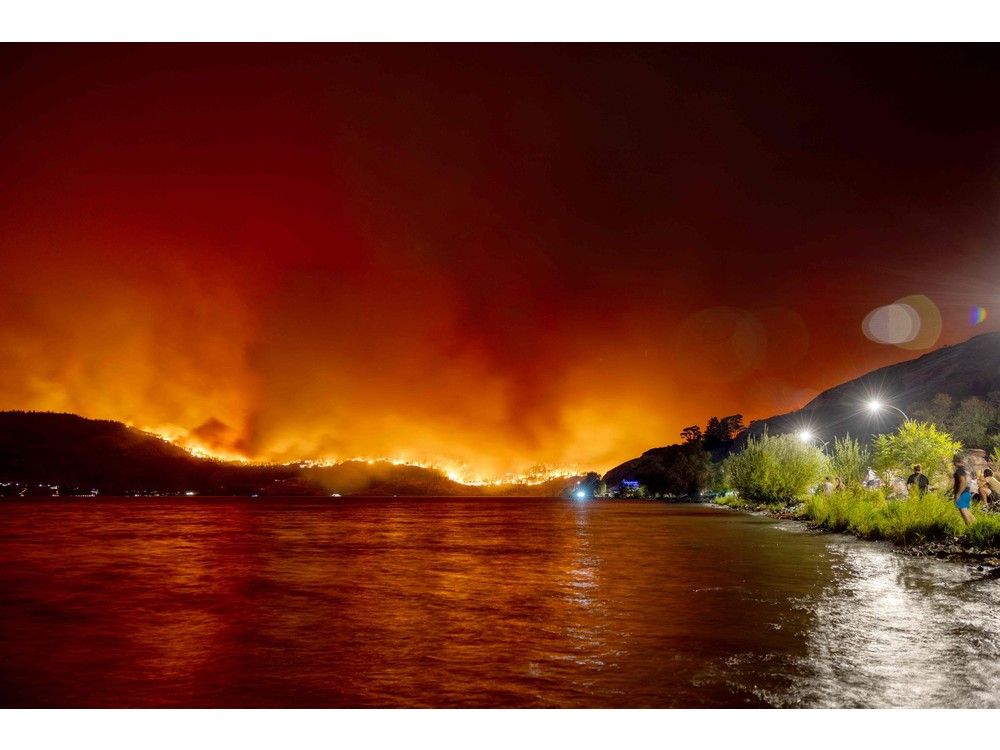
If B.C. doesn’t turn to large-scale efforts to reduce the risks of wildfire, the full costs of those wildfires could have dire economic consequences, says a paper published in the journal Science.
Science is a leading scientific publication, produced by the American Association for the Advancement of Science, with a readership of about 400,000.
The paper was written by wildfire ecologist Robert Gray, UBC adjunct professor Robin Gregory, and a former professor and senior counsel at the University of Victoria law centre. Calvin Sandborn.
They said the wildfire picture in B.C. in the past decade is stark.
More than 70,000 square kilometres, an area the size of the Republic of Ireland, have been burned. The costs to fight those fires were $4.8 billion, with the province setting aside a wildfire contingency of $2.8 billion in its 2023-24 budget.
But that is not the entire picture.
Indirect costs — that include disaster recovery, property loss, environmental damages, and business and health costs — can push the total costs of wildfires 1.5 to 20 times higher.
For example, a recent Natural Resources Canada study cited in the paper showed the cost to fight wildfires in the B.C. Interior in 2017, which caused 10,000 people to evacuated from Williams Lake, was $676.9 million.
But disaster recovery, property damages, forgone timber harvesting fees, renewal of damaged forests, business interruption and lost old-growth forest was pegged at $1.184 billion.
The Science paper points out the total costs of the Fort McMurray wildfire were $10 billion. The Natural Resources Canada study showed the cost to fight the wildfires was a small portion of that, $362 million.
The paper’s authors noted that it’s already difficult for jurisdictions the size of B.C. to absorb the high level of economic burden due to wildfires, and ask what happens when the rising indirect costs of wildfires increases to 10 or 15 per cent of a government’s annual operating budget.
“These are really big, ugly numbers,” Gray said in an interview.
Gray said the scientific community needs to get together to push the province to come up with a plan to address the issue. That will require more money but also finding ways, perhaps by turning wood waste into energy, to help pay for the huge costs of mitigation.
And while substantial proactive mitigation may be more expensive in the short term, making it difficult to gain support, over time the total direct and indirect costs of wildfire should decrease, say the authors.
Wildfire risk reduction in and around communities often includes expensive, specialized work such as thinning timber, creating open spaces that act as fire breaks, pruning the lower branches of trees and removing debris from the forest floor. The idea is to keep a wildfire on the ground and prevent it from moving into the tree tops where it can spread more quickly.
This can also be achieved with intentionally set fires, a historical practice of indigenous peoples. A 2022 Postmedia investigation found that after two decades less than 10 per cent of that work had taken place — and the cost to complete the work could be as much as $6 billion.
The Science paper’s authors note that although their focus is on B.C., this same tough question, along with lessons learned and their main recommendations, apply to regional and national governments in dozens of countries. Scientists expect extreme wildfires to increase in size and severity because of climate change.
The authors recommend that B.C. make a policy shift that sets a clear vision to increase wildfire resilience, establishing targets for how much fire is too much and setting targets for how much area will be treated to reduce wildfire risk, as is done in the states of Washington, Oregon and California.
Targets can include the total area treated annually by prescribed fires, the total area of timber harvest that meets set standards for fuel hazard abatement, and the total area converted from conifers to deciduous tree cover to provide fire breaks.
The province also needs to address public understanding, helping to increase knowledge of the risks, costs and decisions, they said.
B.C. should also co-ordinate with industry, the scientific community, Indigenous leaders and others to test actions that could form the basis for strategies that are applied to large areas of the forested land base.
Sandborn, who was legal director of UVic’s environmental law centre for 20 years, said this is a complex issue with no easy solutions.
“I don’t think we have all the answers at all. We definitely have to mobilize a bunch of smart people because literally this could bankrupt the province if things go sideways,” Sandborn said in an interview.
“How many Fort McMurrays can you survive? How many wine industry companies being put out of business by smoke contamination? How many tourism industries? And people moving out of the interior of B.C. because they don’t want to live in the smoke?”